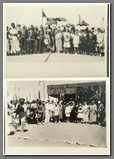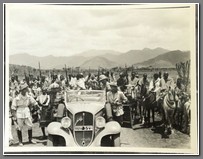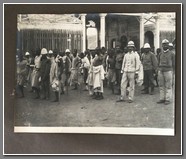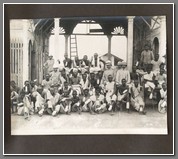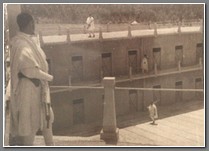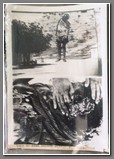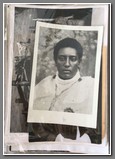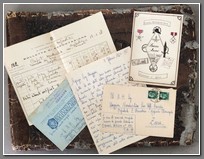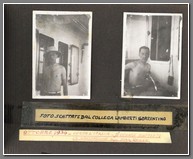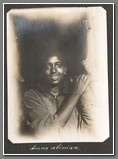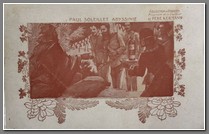Photo Collections
Photo album belonging to an Italian officer in Eritrea in 1895/1896. Interesting in that it shows the celebrations of Italian victories at Kasalla, Coatit and Senef but also the barbaric aftermath of the 1896 battle of Adua. It opens with a photo of the Garibaldi (a troop transport that carried troops to Massaua in 1885, converted to a hospital ship), local inhabitants gathered outside the governors palace in Asmara, the palace of Emperor Johannes at Macalle, survivors of the Battle of Adua after the Ethiopians amputated their right hand and left foot (those indigenous survivors with their limbs intact were more than likely castrated), Italian troops being transported by train, a festival at Queen Margaet’s piazza in Massaua, various animals shown, Ras Mangasha, graves and monument at Dogali shortly after the battle, early phots of Assab, the thrones of King Menelik and Queen Taitu, rare photo of Eritreans in Basci-Bazouk attire (pre-dates the Ascari militia), 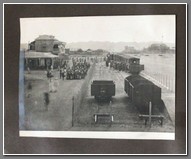 ETH 460
ETH 460 ETH 460funeral for a dead comrade, rare photo of Italian survivors showing the names of battles they had fought in Ethiopia, celebrations following the Italian “victories” at Coatit and Senafe, rare photo of Emperor Menalik in the field, high ranking Tigrayan nobles, Ascari war fantasia, receiving General Baratari at Massaua following his victory at Kasalla, Eritrean ascaris and their Italian officers, one of the earliest photos of Eritrean ascari cavalry, some of the earliest photos of Eritrean nudes. 49 photos, many captioned. SOLD
ETH 460funeral for a dead comrade, rare photo of Italian survivors showing the names of battles they had fought in Ethiopia, celebrations following the Italian “victories” at Coatit and Senafe, rare photo of Emperor Menalik in the field, high ranking Tigrayan nobles, Ascari war fantasia, receiving General Baratari at Massaua following his victory at Kasalla, Eritrean ascaris and their Italian officers, one of the earliest photos of Eritrean ascari cavalry, some of the earliest photos of Eritrean nudes. 49 photos, many captioned. SOLD
Price: $1800.00
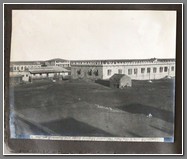 ETH 460 ETH 460 | 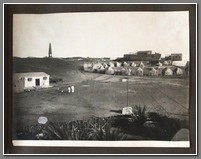 ETH 460 ETH 460 | 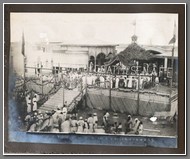 ETH 460 ETH 460 |  ETH 460 ETH 460 |
Photo album assembled by an Italian soldier with a logistics unit fighting in AOI. There is a lovely commemoration at the front of the album, penned at Neghelli on January 8, 1938. It reads:
Courses of Duty
We were first among the first last in the repatriation.
Happy with the Italian events - proud of the work completed.
In the memory of the detachment that first in Somalia and then in Galla Sidama, participating in all the war operations, I acquired fame and value.
On the eve of the repatriation - here remain the heroes who sacrificed themselves in battle for their homeland.
The thought in the gratitude to Captain Nardecchia Cav. Indeed, he was our Department Commander during the glorious days in AOI.
He was a lorry driver so there are many photos showing the problems facing trucks in Somalia. Much on the local life,
The album was given to Captain Nardecchis by his men. There are several documents inside belonging to the Captain, some of which was when he was in a military hospital in Zara in 1943, which means he was a POW. Many photos of Ethiopian dead following the important battle of Ganale Doria, with mass graves, injured prisoners, bound captives, rare photos of dubats, transportation in the field, local militia under arms, much on local life in the hinterland and fraternization between Ethiopian/Somalis and Italians. 294 photos, no captions.
Photo albums from the Somali Front are rare because Graziani had only 55,000 men at his disposal and almost half of them were locals. However, although the army was of a modest size, Graziani had the advantage of being extremely mobile, as he had equipped himself with numerous trucks, cars, tanks, tractors and trailers. Therefore, thanks to his logistical superiority, at the beginning of hostilities Graziani opted for a rather flexible deployment: small garrisons scattered along the border. The fact this this photo album is from a logistical unit under Graziani’s command, makes this all the more rare and interesting. SOLD
Price: $1900.00
Note from Wikipedia: At the beginning of the Second Italian-Ethiopian War , from 4 October 1935, the city was one of the headquarters of Ras Destà Damtù. After having subjected Neghelli to frequent bombings, General Graziani managed to take over the city shortly after the battle of Ganale Doria subsequently obtaining the title of Marquis of Neghelli from King Vittorio Emanuele III. Neghelli was then retaken by the British allied forces of the Royal West African Frontier Force on 27 March 1941, after they had also taken over the city of Dolo. However, the British military-colonial unit found that the city had already been abandoned by the Italians for 10 days, and the local aborigines, the Borana (subgroup of the Oromo) , had already looted and destroyed the barracks and all the buildings of the Italian Army . According to David Buxton, in 1943, an Ethiopian Army battalion was garrisoned in "this half-built Italian settlement."
Photo album belonging to an Italian journalist who served in Ethiopia between May 15 – October 10, 1936. It begins with his voyage aboard the “Ceare Battisti”; landing in Massaua; fraternizing with local inhabitants in the desert around Zula; passing through Cheren, Agordat, Adi Ugri, before reaching Asmara on May 24. Photos of him with journalist colleagues; his “shack” with local female; mixing with local children and mothers at Decamere; what he calls his “grand adventure from Asmara to Adis Abeba, photographing local life along the way at Adigrat, Macalle, Ambaradam, Fort Galliano, Lake Ascianghi, Corbo (where he witnesses the disarming of local insurgents), Ualdia, Boru Mieda and Dessie. He must have been a VIP because he is shown with an automobile that was a gift to him offered by the Deggiac Kassa at Adigrat. Embedded with the army, he photographs Graziani saluting his troops. By September he is in Addis Abeba, leaving for Italy shortly afterwards. Importantly there are photos of him taken by famed Italian journalist Lamberti Sorrentino (who founded the newspaper Corriere Sudetiopico in East Africa. 155 well and legibly captioned photos. This is the first photo album I have seen by an Italian journalist, who was clearly fascinated by the lives of local inhabitants.
Price: $950.00

